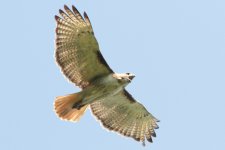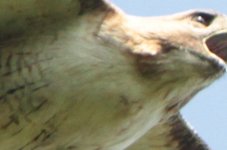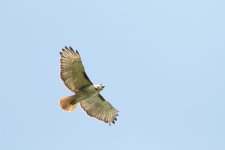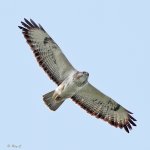Jim Lundberg
Well-known member
Canon 7D, 300 f2.8L IS + 1.4. ISO 1000, f5.0 1/2000 sec, +2/3 stop exposure compensation (I believe).
I took several photos of this Red-tail, but all at the same camera settings - one of my presets. I'm not happy with the resolution. Would it have been better to reduce ISO or stop down? Is 1/2000 fast enough to stop the wind blur on the chest feathers? Should I quit pixel-peeping. Should I be happy with what I got. I'm still making adjustments to my Birds in Flight settings. It was taken in full sunlight, so the conditions can't get much better.
Thank you, Jim
I took several photos of this Red-tail, but all at the same camera settings - one of my presets. I'm not happy with the resolution. Would it have been better to reduce ISO or stop down? Is 1/2000 fast enough to stop the wind blur on the chest feathers? Should I quit pixel-peeping. Should I be happy with what I got. I'm still making adjustments to my Birds in Flight settings. It was taken in full sunlight, so the conditions can't get much better.
Thank you, Jim
Attachments
Last edited:







